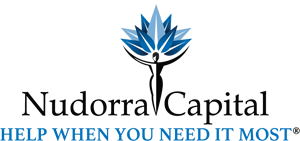The Registered Disability Savings Plan (RDSP) gives disabled adults, or the parents of disabled children, an easy and effective way to save and invest money for long-term security and peace of mind. Disabled people often have challenges finding a job, and often earn lower wages when they are working.
Money invested in a RDSP grows tax-free, and you could qualify for government grants, too. In some cases, the government will give you money even if you can’t afford to contribute. RDSP contributions can net a 300% return, depending on your income.
To qualify for a RDSP, the disabled beneficiary must be:
- Eligible for the Disability Tax Credit (DTC);
- Under age 60; and
- A resident of Canada with a valid social insurance number.
The disabled beneficiary never pays tax on earnings inside the RDSP, only when funds are withdrawn. There’s no limit to how much you can add to an RDSP per year, but there is a $200,000 lifetime contribution limit. RDSP funds have to be withdrawn after age 60, so no contributions can be made after the disabled beneficiary turns 59.
Government contributions
Some RDSP holders qualify for Canada Disability Savings Bonds (CDSBs) and/or Canada Disability Savings Grants (CDSGs). These are federal government contributions that provide up to $4,500 a year and up to $90,000 over a beneficiary’s lifetime (grants totaling up to $70,000 and bonds totaling up to $20,000).These funds would be paid directly into your RDSP.
The amount of CDSG or CDSB a beneficiary can qualify for depends on family income and the disabled beneficiary’s age. When a child becomes an adult, her income is used in the calculation. When disabled beneficiaries turn 49, they are no longer eligible for the grants or bonds.
If you are just setting up your RDSP or missed contributing in past years, you can “catch up”. Beginning in 2008, unused grants and bonds can be carried forward for up to 10 years, giving you the opportunity to catch up by contributing more than $3,500 a year. Note that when catching up, the maximum payable in any one year is $10,500 for grants and $11,000 for bonds.
Canada Disability Savings Bonds
The CDSB is for disabled people in lower income families. If you’re eligible for the CDSB, you don’t need to contribute anything to receive government money. Those with family incomes less than $25,584 can receive $1,000 of government money annually for up to 20 years (or until age 49), regardless of how much is contributed to your RDSP. A lower yearly amount is available from the government if family income exceeds $25,584 but is under $43,953. (Above $43,953, you don’t qualify for the bond.)
Canada Disability Savings Grants
To receive the full amount of the CDSG every year, you need to contribute either $1,000 or $1,500 a year (until age 49), depending on income level:
- If your family income is less than $87,907, Ottawa provides 300% in matching grants for the first $500 contributed, and 200% in grants for the next $1,000 of contributions;
- Families earning more than $87,907 receive a 100% matching grant on the first $1,000 of contributions each year.
- The maximum amount of CDSG a disabled beneficiary can qualify for is $3,500 per year.
Impact On Other Government Benefits
The assets inside your RDSP don’t affect your eligibility for provincial benefits, such as the Ontario Disability Support Program.
When money is taken out of a RDSP, it doesn’t affect any federal benefits, like the Canada Child Tax Benefit, the HST/GST Credit, Old Age Security or Employment Insurance.
But depending on your province or territory, income-tested benefits could be impacted, because income from RDSP withdrawals may be completely or only partially exempted. (In Ontario, any money withdrawn from your plan is not a factor when determining your eligibility for social assistance.)
Other Information
A disabled beneficiary can have only one RDSP.
Major banks and brokerage firms offer RDSPs.
Anyone can contribute to an RDSP, including friends and family, if they have written permission.
The contribution deadline each year is December 31st. Contributions are not tax-deductible.
Funds taken from the RDSP can be used only to help the disabled beneficiary.
If you’re the parent of a disabled child, you can open a RDSP for your child until December 2016; from 2017 a court will have to certify that you are the child’s financial guardian.
About Nudorra Capital:
Nudorra Capital is a litigation and pre-settlement loan company. During litigation, clients may find themselves facing financial difficulties. At Nudorra Capital, we recognize the sensitivity of the situation and provide loans professionally, timely (usually within a 24 to 48 hour period) and at the most competitive rates in the industry.
Our loans do not require interim payments and are only paid back when the case is settled.
We believe as a company, that your client’s priorities should go towards healing themselves first, not worrying about whom to pay. To find out more about how we can help, please call us at (416) 342-9590 or email our President Jeffrey Gottheil at jgottheil@nudorra.com
